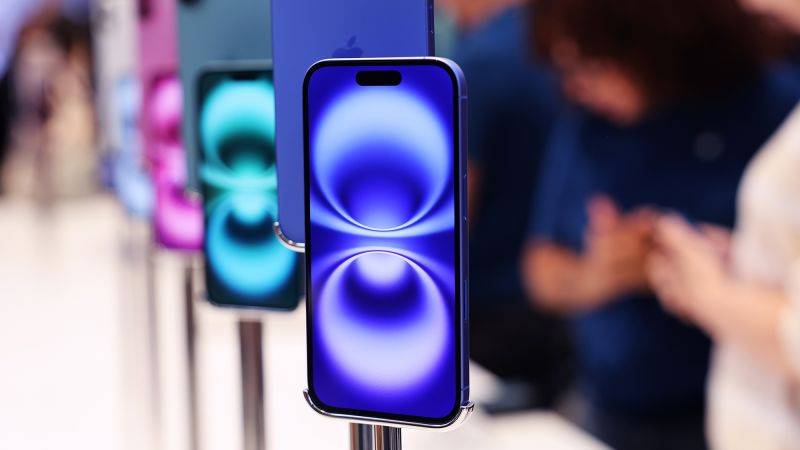As the season of new iPhone launches approaches, industry analysts anticipate potential price increases for Apple’s latest lineup, even though the official price tags may remain unchanged. This situation is primarily attributed to ongoing tariffs imposed by the Trump administration, which have created a complex challenge for the technology giant. Analysts speculate that Apple may have to increase prices to offset these tariffs, as they weigh the implications of such decisions carefully.
The Wall Street Journal recently reported that Apple is contemplating a rare price hike for its most critical product, the iPhone, as a result of increased costs associated with tariffs on imports from China. The company faces pressure to pass these costs onto consumers without attracting backlash from the administration. Indeed, raising prices due to tariffs could provoke backlash from the Trump administration, as has been observed with other tech companies that have undergone similar ramifications. To mitigate any potential fallout, analysts suggest that Apple might strategically associate price increases with the introduction of enticing new features, particularly those involving artificial intelligence (AI), or by enhancing the storage offerings rather than simply hiking the base prices.
In addition to the pricing dynamics, Apple is expected to release a sleeker, slimmer version of the iPhone, which could create an opportunity for the company to reshape its pricing structure across its entire product line. With this new model, the barrier to entry for consumers looking to purchase an iPhone will be notably higher now that Apple’s budget iPhone SE has been replaced with the pricier iPhone 16e. Analysts like Gil Luria from D.A. Davidson have indicated that “price increases” do not necessarily mean that every new model will be priced higher than its predecessor but provide various avenues for Apple to discreetly enhance its price points.
Despite anticipations surrounding price adjustments, Apple has not publicly commented on its pricing strategies related to tariffs or any potential increases for its products. The company must navigate a tricky supply chain landscape, primarily relying on Chinese manufacturing for its iPhones. Although Apple has begun shifting parts of its supply chain to countries like India and Vietnam, the majority of its production remains in China. CEO Tim Cook has indicated that tariffs could cost Apple a significant amount in the coming quarters, including an estimated loss of $900 million in the second quarter of 2025.
Recent developments indicate that smartphones are currently exempt from reciprocal tariffs, with a temporary trade agreement struck between the Trump administration and China that would reduce tariff rates for 90 days. While this news provides a brief respite for Apple and other technology firms, it does not eliminate the overarching uncertainties surrounding future trade policies and tariffs.
Before the recent agreement, analysts like Daniel Morgan at Synovus projected that Apple may need to increase device prices by approximately 30% to completely counteract the effects of tariffs. Such a price jump would push the starting price of a new iPhone model, potentially the iPhone 17, to over a staggering $1,000, up from the current starting price of $799 for the iPhone 16.
Yet, some experts, including Wedbush analyst Dan Ives, stressed that irrespective of the temporary truce, consumers should be prepared for a possible price hike due to elevated production costs. Cook’s attempts to smooth relations with the Trump administration, including significant investments in U.S. facilities, indicate a steep path forward.
Important stakeholders believe that any across-the-board price increases tied directly to tariffs would quickly resonate negatively with consumers. Rather than appearing as direct consequences of policy decisions, it seems more plausible that Apple would attribute any price adjustments to technological advancements or new phone designs to avoid public discontent.
As a response to the subsequent market dynamics, Apple is contemplating linking any price increases to enhancements or new features, suggesting that while tariffs contribute to rising costs, Apple can still market its product improvements effectively. The introduction of AI features and hardware changes, especially, offer not just justification for price hikes but also potentially shift consumer perception concerning value.
Furthermore, recent reports suggest that Apple plans to introduce a new, thinner iPhone model, tentatively referred to as the iPhone 17 Air, that would likely compete in the premium market segment against alternatives like the Samsung Galaxy S25 Edge, allowing Apple to revise its pricing strategy for the entire range of devices.
Ultimately, while Apple considers these market adjustments and potential price increases, the company navigates a challenging landscape marked by changing consumer behavior and economic conditions. Ensuring that higher prices do not deter sales volume remains crucial, as evidenced by the sluggish demand for iPhones, highlighted by recent revenue increases, complicating Apple’s pricing strategy in this volatile environment.



